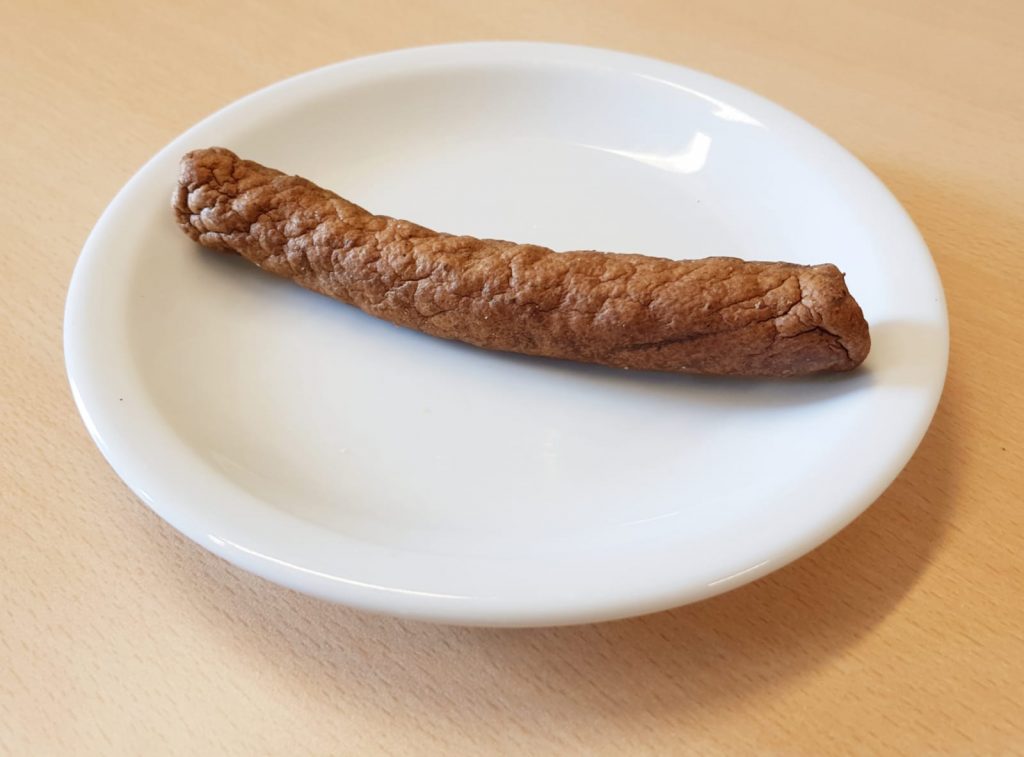
In my series on Dutch “specialities” I have so far owed you the frikandel. That will change today.
The frikandel is the most commonly consumed fried snack in the Netherlands (it even beats croquettes and bitter bal!s) and the first thing you need to know about it is that it has absolutely nothing to do with the German Frikadel!e (For the unitiated: the Frikadelle is a kind of fried meatball) The frikandel is a kind of sausage without skin and for many years it was considered a “guilty pleasure”, because all sorts of questionable ingredients were attributed to it. Among other things, it was said to have cow’s eyes, ears and udders.
The “Keuringsdienst van Waarde”, a Dutch TV consumer magazine, went on a research tour and found out that until the 1980s chicken skin and cows‘ udders were indeed still processed in the frikandel, but animal eyes and ears never were. From the 80s on, the meat-processing industry had discovered something new: “Kipseperatorvlees“ – that is, chicken meat. (It’s a pity that no opponent will let me get away with this in Scrabble. Does the word even fit on the board anymore?)
This “separator meat” is the meat that is still on the bones of the chicken when the thighs and the fillet are separated for separate sale. These remains are mechanically separated from the bone, together with pork, spices and breadcrumbs very finely ground, formed and deep-frozen – the frikandel is ready.

From this point of view, the frikandel is a very high-quality leftover product, and the art is actually in shaping it and freezing it as quickly as possible without it breaking into pieces. There are films on YouTube about the process, but they are only in Dutch. When I see the still unfrozen frikandels slide across the assembly line – please don’t ask me about my associations.
After the frikandel was established as a snack, new creative culinary combinations were created on the basis of it. The sausage shape opened up completely new possibilities for decoration on a combination plate! The most popular example is – depending on the region – “fritjes catamaran” or “fritjes waterfiets (water bicycle)”: chips in the middle, one frikandel each to the right and left of it – and the catamaran can set sail.

After the frikandel as a culinary snack highlight, I will now – figuratively speaking – push the deep-fryer aside and devote myself to less greasy topics in the future. How about something sweet for once?
German original text: BBR
English translation: BCO
Bildquellen
- frikandel: Bildrechte beim Autor
- frikandel XXL: BBR (Arm-Double: Alwin Bongers)
- fritjes catamaran: Alwin Bongers, Arnhem

